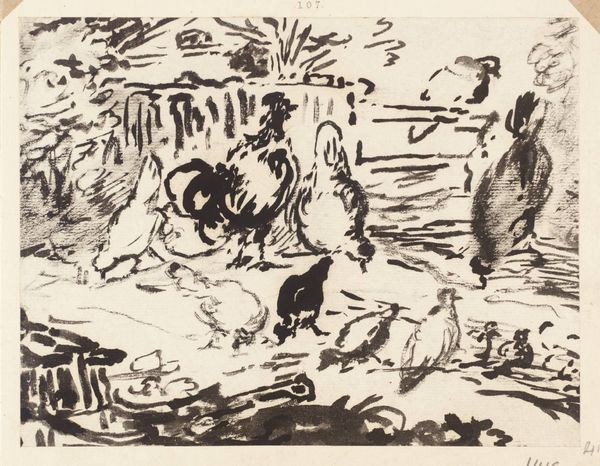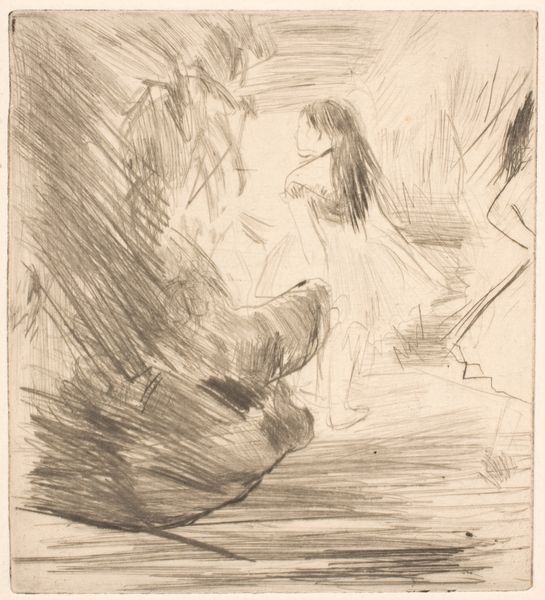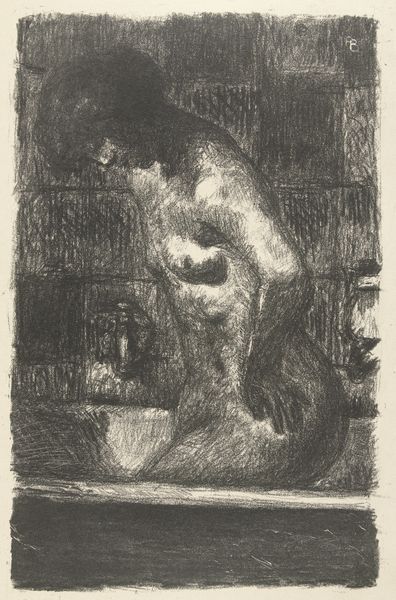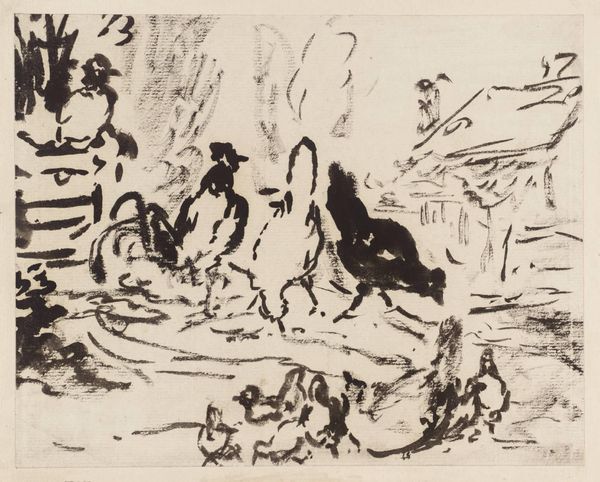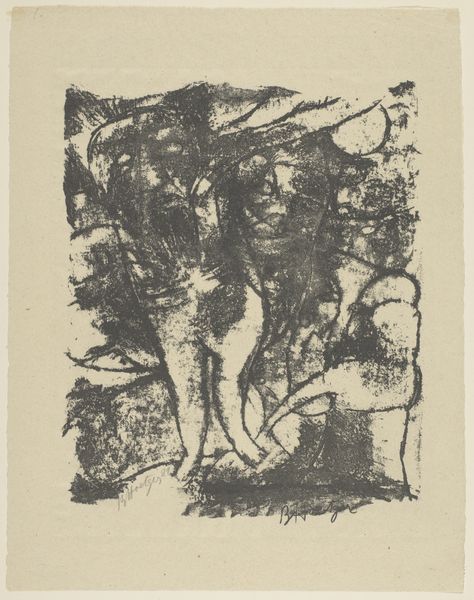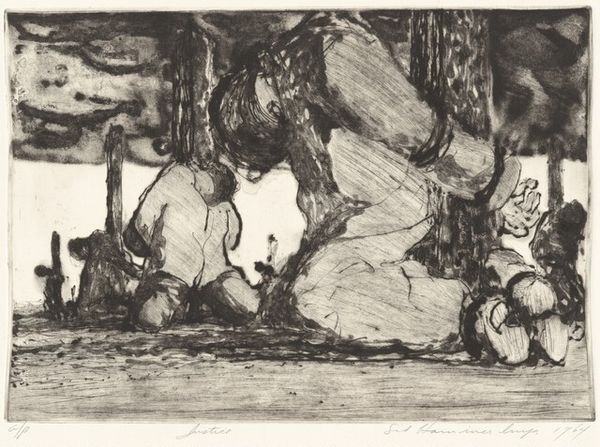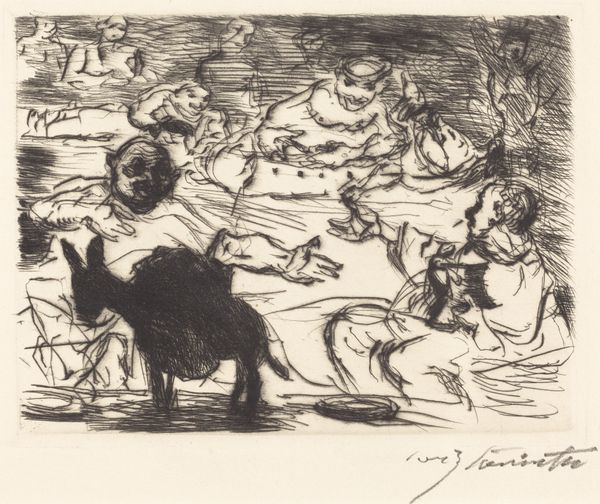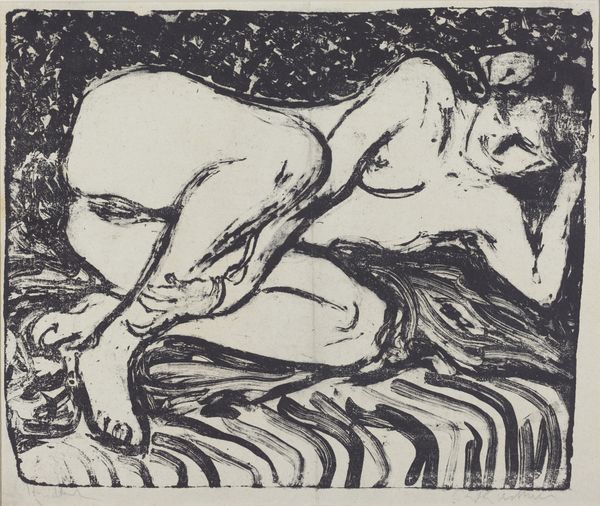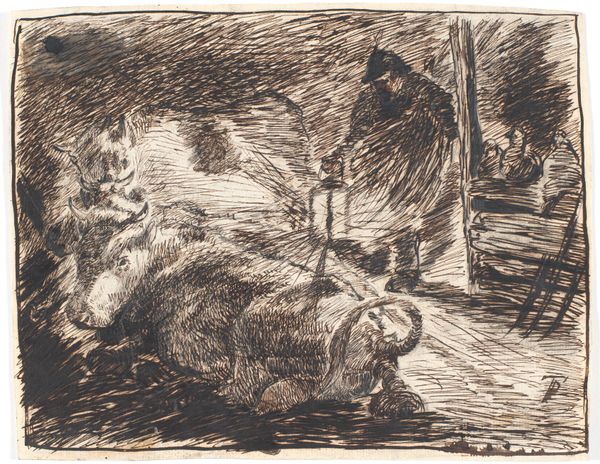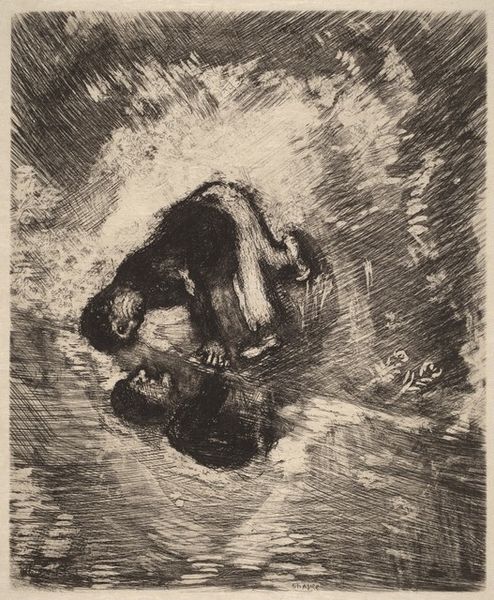
drawing, lithograph, print, ink
#
drawing
#
ink drawing
#
lithograph
# print
#
pen sketch
#
figuration
#
ink
#
expressionism
#
nude
Dimensions: 342 mm (height) x 434 mm (width) (bladmaal)
Editor: Vilhelm Lundstrom's "Figurgruppe," created in 1919, is an ink drawing. The figures appear intensely vulnerable and somewhat tormented, caught in a whirlwind of brushstrokes. What stands out to me most is the density and roughness of the mark-making itself. How do you approach this work from a formalist perspective? Curator: This drawing compels us to observe how line and form construct a sense of anxiety. Note how Lundstrom uses the stark contrast of black ink on the white ground. It isn't representational; instead it calls attention to the inherent qualities of the medium and the artist's gestures. Consider how the agitated hatching and cross-hatching create tonal depth but also visual unrest. Does the lack of clear spatial recession impact your perception? Editor: Absolutely. The layering of lines definitely evokes that sense of unease. It is like the figures are dissolving into the space around them. I see a tension between figuration and abstraction in the piece. Curator: Precisely. Look at how the negative space interacts with the drawn forms. Are we looking at fully realized figures or the trace of figures suggested only through tonal masses and rhythmic strokes? Where does the figure begin and end? This ambiguity of form encourages a consideration of the materiality of art, prompting us to analyze it using theoretical methods like structuralism. The signs, the figures, the line qualities signify only by virtue of difference and their location within the artwork. Editor: That's fascinating! Focusing on the line qualities rather than just seeing figures opens up a new way to appreciate it. It shows the piece's emotive power. Curator: Indeed. Close attention to the work’s intrinsic visual components lets us extract an array of ideas independent of cultural factors. It’s not just about representing bodies. It’s about the emotional language of ink.
Comments
No comments
Be the first to comment and join the conversation on the ultimate creative platform.

